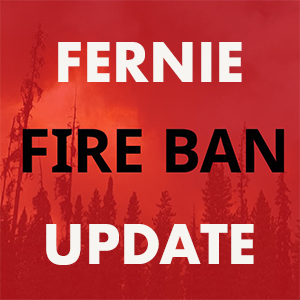
I’m sitting with Ed Cutts at my kitchen table viewing an album of photos that represent a history of Cokato and its residents from the past 100 years. Ed, who was born and raised in this area, is a fountain of knowledge. With each photo the stories effortlessly flow and I’m completely engaged in listening to this remarkable storyteller.
Ed stops for a moment to speak about a skating rink situated at one time at bottom of road down past the Leroux Mansion. A photo of the bridge at Cokato with a sleigh taking milk to town, another of Elsie Anderson and Shirley Vandenburg, and a delightful image of a row of piglets sucking on bottles. Ivy Harrad had devised this apparatus to help the piglets feed. Another interesting photo shows Ed with a donkey, behind Granny Vandenberg’s house.
Ed pivots and speaks about the Flathead cabin and fishing and hunting on the American side, getting to know the people in Polebridge and Hungry Horse Montana, recalling in Columbia Falls a store with a barrel full of peanuts. On top was a large block of cheese with cats sleeping on it, he marveled that despite this scenario people still purchased the cheese. “I was friends with the border guard, the border closed early but the RCMP would patrol it because people tried to sneak across, so much history gone, and nobody cares” Ed says. He continues, “Cokato, Morrissey, Willie Chudik, Joe Dvorak lived there, people wanted to log around the Morrissey cemetery, but it was stopped.”
Ed was born in 1936 in Cokato near where he’s lived for the past 58 years. He was the youngest of children, Chap, Rose, Sara, Jack and Olga born to parents Joe and Sarah Cutts, his dad worked in the mines “I’m the only one left”, he says wistfully. “I left the farm at 18 and went one month in the Galloway mill then 12 years in the pole yard”. At age 20 he had an unusual meeting with the woman he eventually married. He was hospitalized and accidentally fell out of bed. Unable to get up on his own, two nurses came to put him back to bed. One of them was a dark-haired beauty by the name of Joy Zuffa. Ed was immediately smitten and after a four-year courtship they married in 1962.
Ed worked on the Cokato farm for ten years getting up at 5am to do chores that included washing down cows and feeding them hay wherever they were situated on the farm. He and five others worked three milking machines for the 70 cows that had to be milked, the milk was then packed in eight gallon cans to place in the shed cooler. Next they cleaning the barn, putting manure onto the field and delivering the milk to the Fernie Dairy to pasteurize.
He said the farm grew all their hay; stacks of hay bales were 30 feet high to take to the Coal Creek Mine for the horses. They worked a seven day week but on, “Sunday afternoon we would go to Elko using the back road. Elko had businesses back then, Shorty the Chinaman had a store that sold ice cream and pop, he would count the money using a Chinese bead counter (Suan-Pan in Chinese), we would laugh at that. We also went with the Cunliffe’s to Galloway to go fishing in Sand Creek. Costanzo, Cunliffe, Naccarato, Barton, those were familiar families. Bernard Anderson was born in 1900, he was close to 100 when he passed, he owned nearly everything from the airport to Cokato, today names like Vallance, Jakubick, Razzo, Lutzke, Cutts, are familiar too. When I got married, I moved to Fernie, lived above the John Rahal building then went to Cokato and built a house where I still live. By then I was working for Dicken Bus Lines as a shop mechanic, Art Harrad was there too, Dicken Ready Mix, back and forth from those two jobs, and in 1995 I retired”. He recalls it was an amazing sight to see a lineup of seven brand new Greyhound buses so he took a photo that Greyhound used for their calendar in the eighties. At that time Greyhound buses were looked after by Dicken, “I was over 25 years with Dicken”, Ed says.
Eddie mentions dates and events such as the 1902 mine disaster at Coal Creek that killed about 130 men, the 1904 Fernie Fire , he praised “The Big Bend” book written by Kevin Allen and the “Lost Kootenays” because it speaks to the history, he said that in 1904 tobacco was 15 cents a pack, in 1927 wood was $2.25 per cord, in 1951 there was diesel trains, in 1958 the Brewery moved to Creston and the Coal Creek mine shut down, on January 16,1964 it was the end of the passenger train through our area.
As Joy wasn’t available to join Ed for the interview, she wrote a note saying, “Ed and I married on April 20,1963, 60 years. We lived above John Rahal’s store for two years, where Pat was born 58 years ago. We moved back to Cokato to his sister’s house till ours was built and by then we also had daughter Christine. Ed’s brother Chap was next door and Eric and Gizela Lutzke and Herman and his parents and Mr. Harrad across the track. Then more came after Mr. Anderson died, Phyllis sold some of the land and then all hell broke loose and sold and more people moved down here, it’s not quiet anymore. We had good neighbours, didn’t agree on everything but we were there to help one another, now we don’t know them all, only a few, and only a few we can count on to help us, maybe, if they are around but we are very thankful just the same. The Andersons were very good to us all, our kids’ number one theme is with fond memories especially of Phyllis, she was like a fairy godmother to all the kids. Best times was haying time and running cows to summer pasture and back in fall after haying and we had Halloween parties at Humper and Bonny’s Vandenburgh for all the kids that about that time there was about ten. My 2 cents worth.”
Joy and Ed are the proud grandparents of four grandkids and 3 great-grandkids. Daughter Christine lives in Castelgar, and son Pat resides in Jaffray.
The black and white photos decades old depicting life in Cokato back then of haying, delivering milk, and of owners of the dairy farm the Andersons, and other residents are fascinating. It’s a poignant look at how life was back then. There was hard work but there was much camaraderie in the work. There was more trust and friendship between neighbours who were always ready to provide help when needed. But time and progress bring about change that is inevitable but isn’t always welcome or better for humanity.
Thank you Ed for your stories and photos of life back in the day, it was a pleasure listening to your memories of the people and life of Cokato.
By Mary Giuliano
Mary arrived in Fernie in May of 1953 and has lived here ever since, by choice, because she loves the Elk Valley and everything it stands for. Read more from Mary here.











































